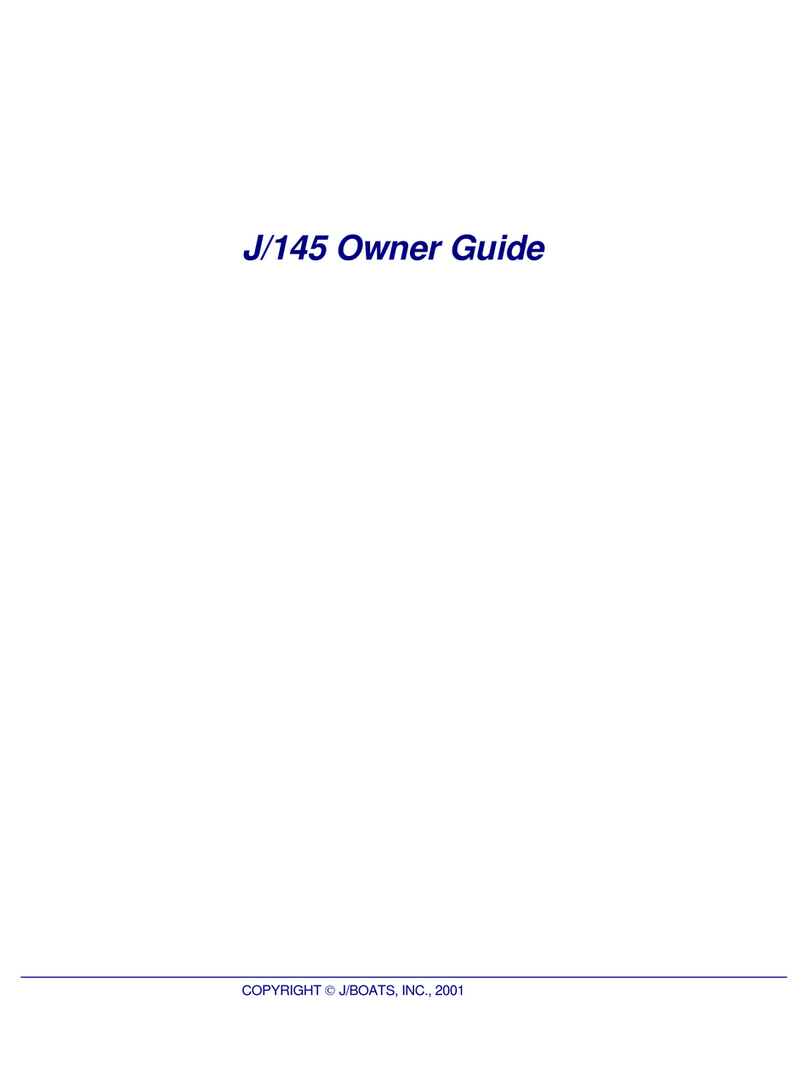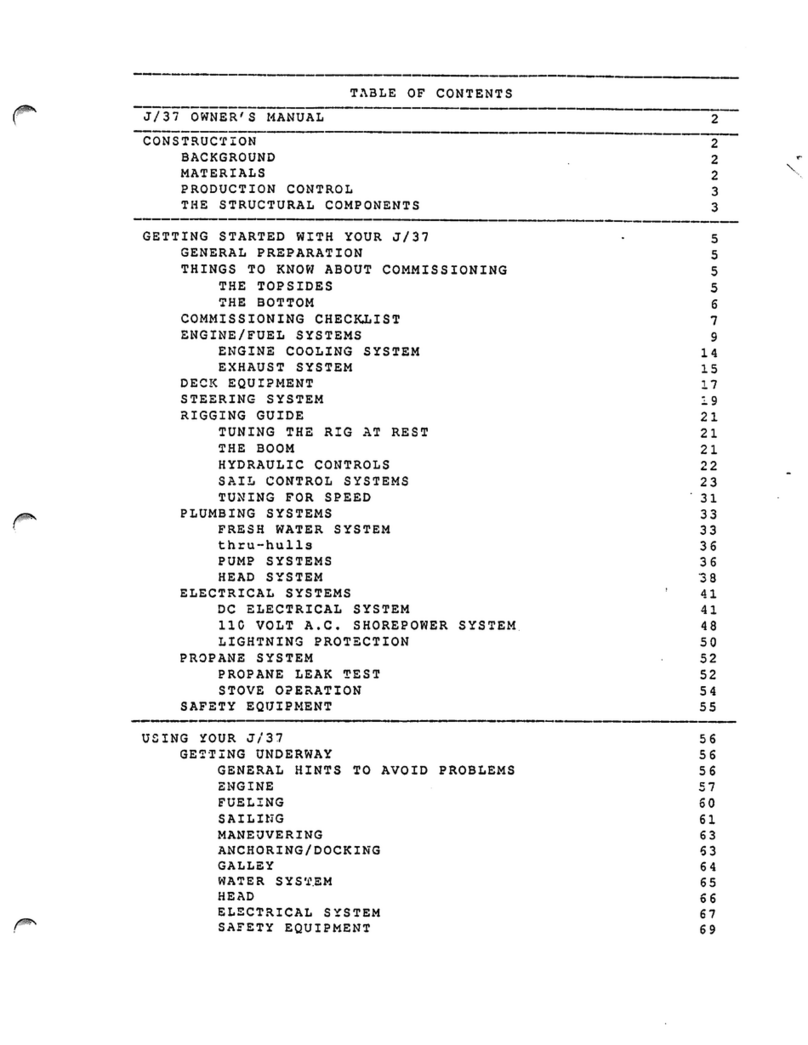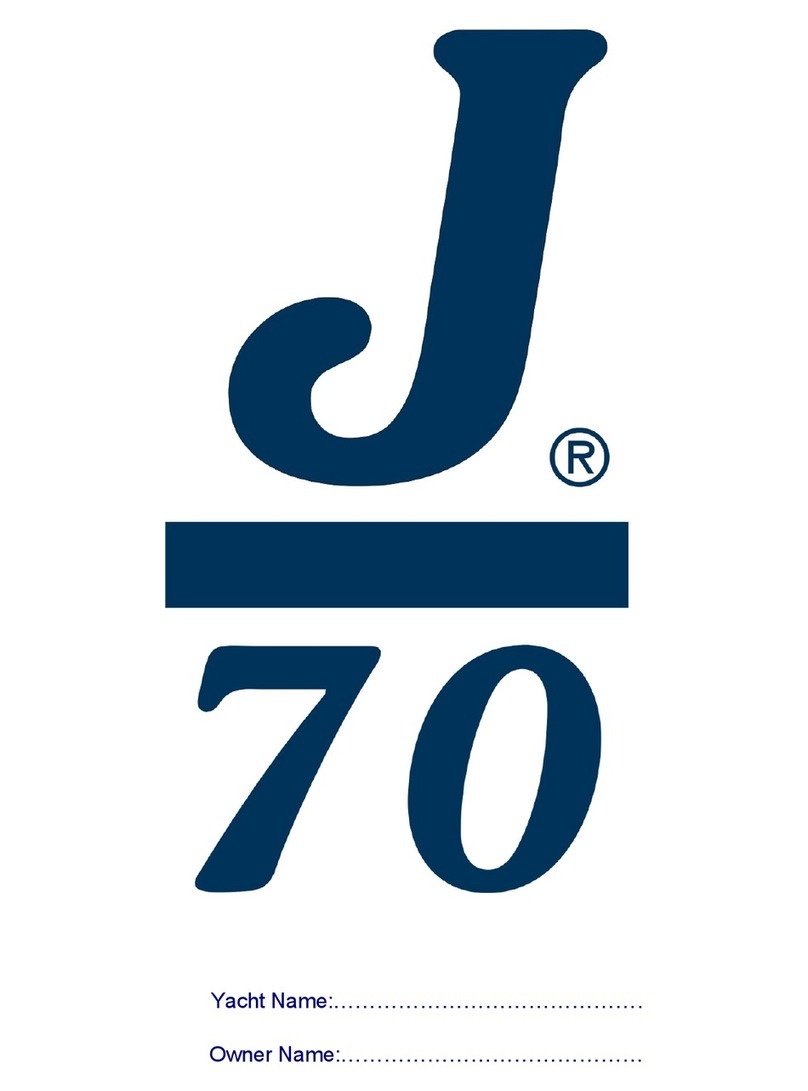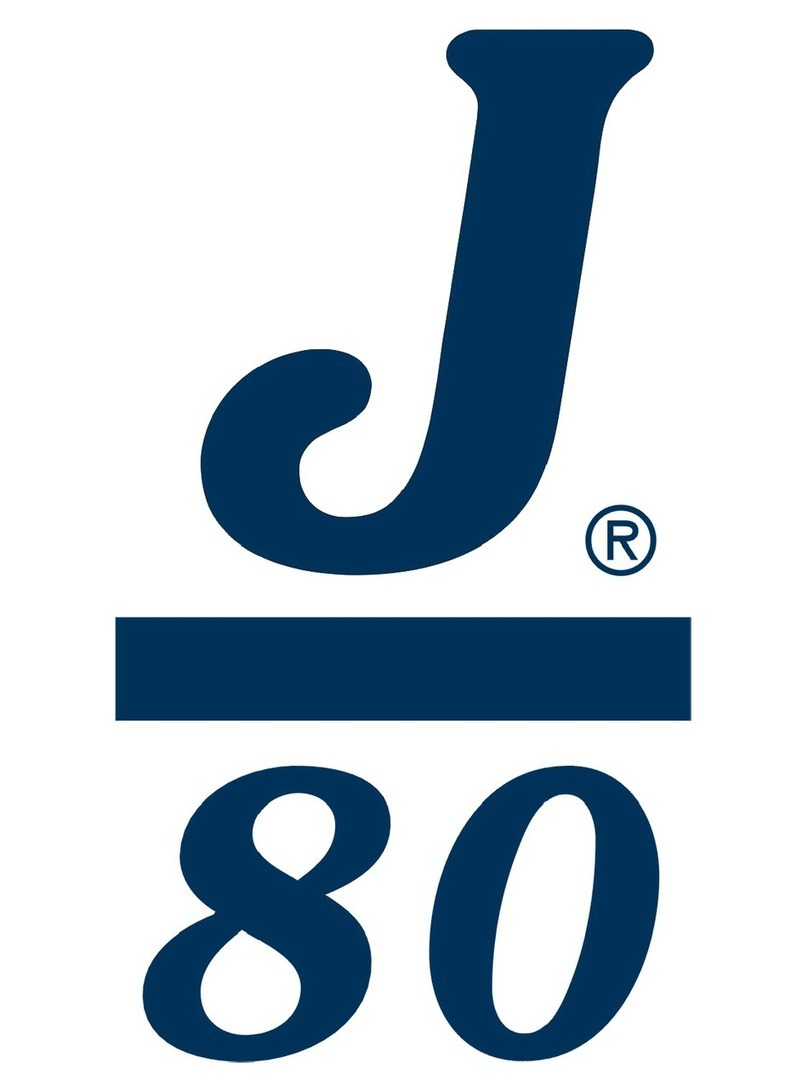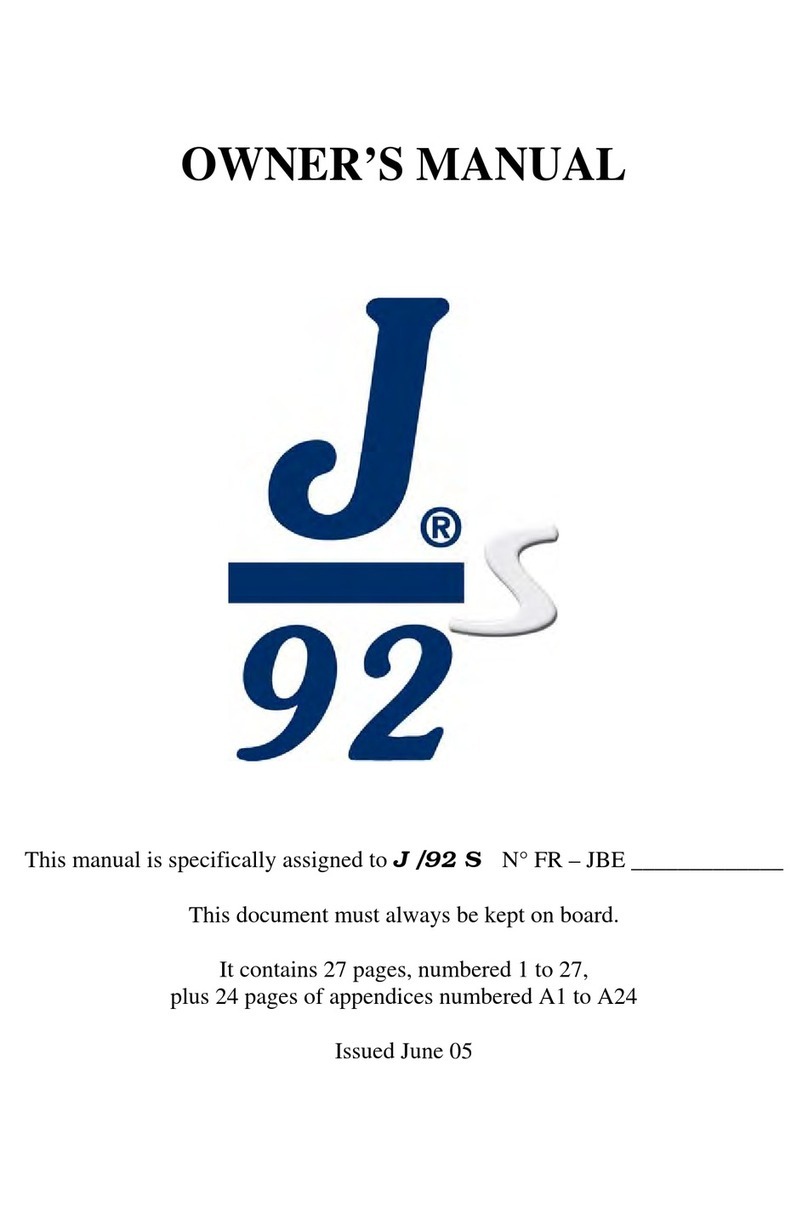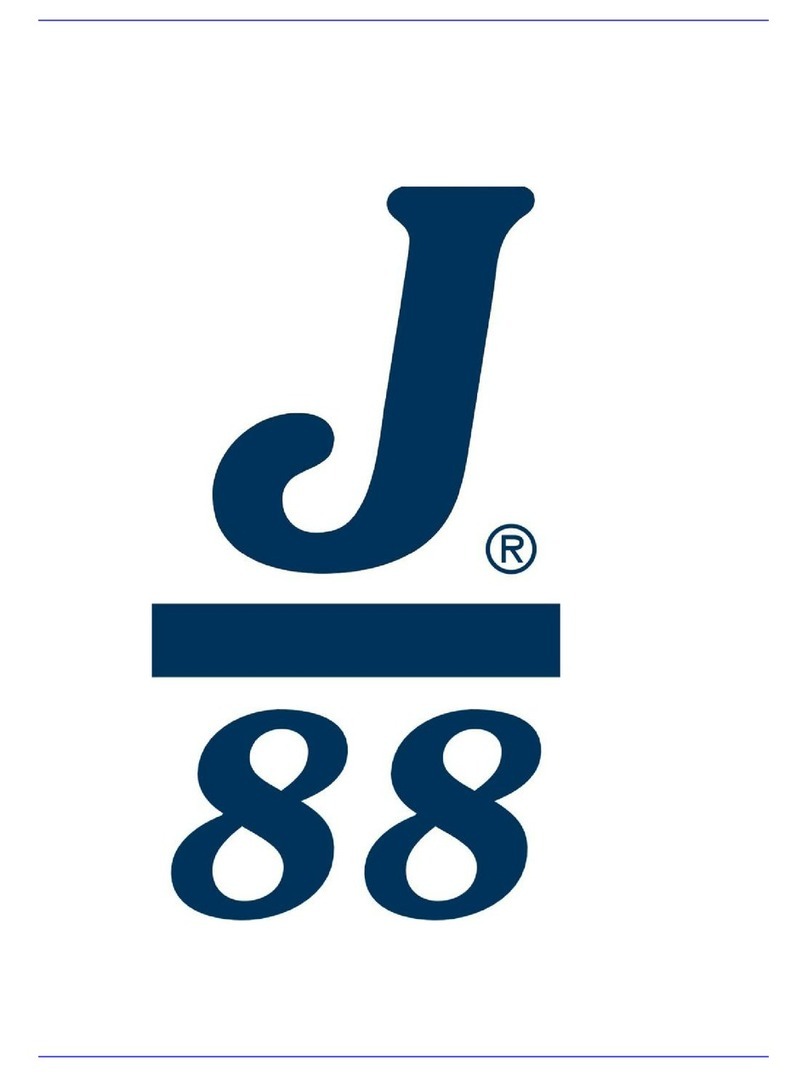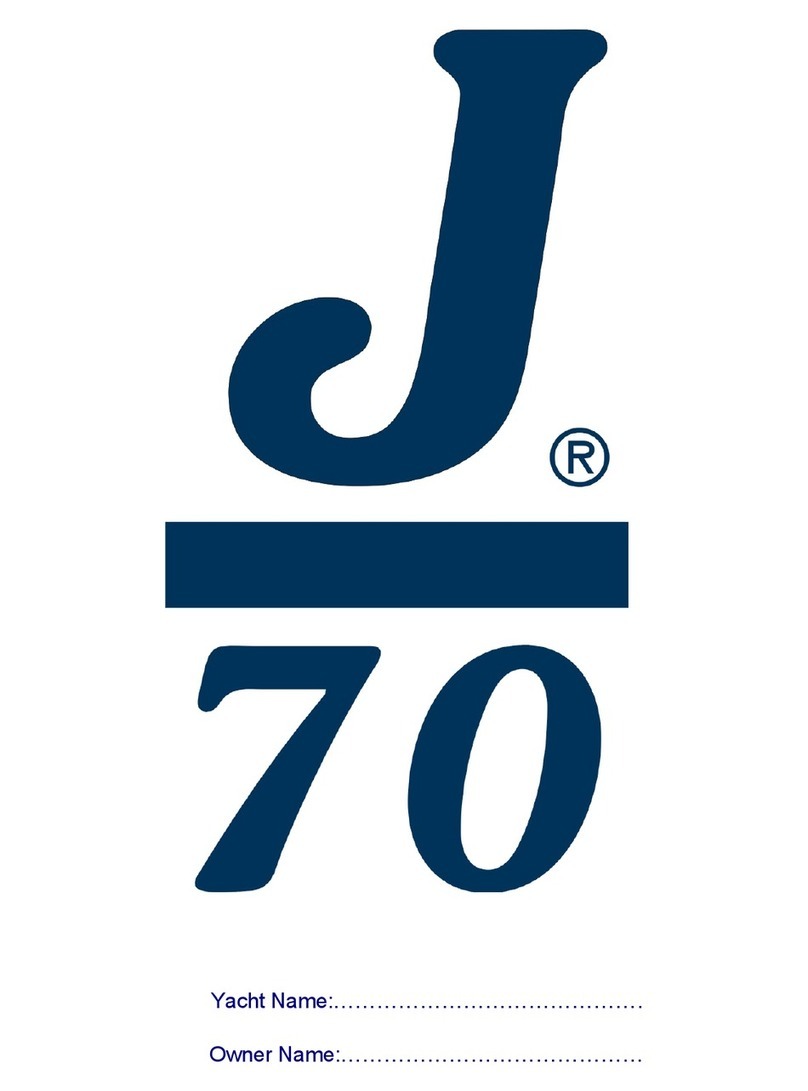
J/111 OWNER MANUAL 3
Table of Contents
Introduction........................................................................................................................................................................4
CE & ISAF Certification....................................................................................................................................................5
Specifications....................................................................................................................................................................8
Important Contacts ...........................................................................................................................................................9
Commissioning Checklist .............................................................................................................................................14
IMPORTANT Commissioning Follow-up.....................................................................................................................15
Tuning The Rig ................................................................................................................................................................16
Diagrams, Layouts, & Schematics...............................................................................................................................18
Deck Hardware Layout.................................................................................................................................................18
Mainsheet & Cunningham Diagrams...........................................................................................................................19
Traveler Layout..............................................................................................................................................................20
Adjustable Jib Lead System.........................................................................................................................................21
Deck House & Halyard Layout.....................................................................................................................................22
Reefing System Diagram..............................................................................................................................................23
Standard Mast Step Location Layout...........................................................................................................................24
Steering System............................................................................................................................................................25
Exhaust System Layout................................................................................................................................................26
Fuel System Layout......................................................................................................................................................27
Thru-Hull & Seacock Locations....................................................................................................................................28
Fresh Water System Schematic...................................................................................................................................29
Head & Holding Tank Schematic..................................................................................................................................30
DC Distribution Panel....................................................................................................................................................31
DC Component Layout.................................................................................................................................................32
DC Electrical Schematic...............................................................................................................................................33
OptionalAC Schematic.................................................................................................................................................34
OptionalAC Panel.........................................................................................................................................................35
Optional LPG System...................................................................................................................................................36
Bonding System............................................................................................................................................................37
Keel Cover Plate System..............................................................................................................................................38
Engine System ................................................................................................................................................................39
Sail Drive........................................................................................................................................................................39
Fuel System...................................................................................................................................................................39
Engine Cooling & Exhaust Systems............................................................................................................................39
Engine Safety Precautions...........................................................................................................................................40
Bleeding the Engine......................................................................................................................................................41
Engine Maintenance.....................................................................................................................................................43
Plumbing Systems..........................................................................................................................................................44
Fresh Water System.....................................................................................................................................................44
Thru-Hulls & Seacocks .................................................................................................................................................44
Pump Systems..............................................................................................................................................................44
Head System.................................................................................................................................................................45
Electrical System ............................................................................................................................................................46
Optional Systems............................................................................................................................................................47
Safety................................................................................................................................................................................50
Maintenance Tips & Checklist.......................................................................................................................................52
Storage Tips.....................................................................................................................................................................56
APPENDIXA- Best Practices - Boat Inspection.........................................................................................................58
APPENDIX B -ABS (Dated) Guidelines for SurveyAfter Construction.....................................................................63
APPENDIX C - Care and Cleaning Recommendations forAcrylic Portlight..............................................................64
APPENDIX D - J/111 Supplier List...............................................................................................................................66
CCFC Limited Warranty......................................................................See Warranty Package Included with the Yacht






